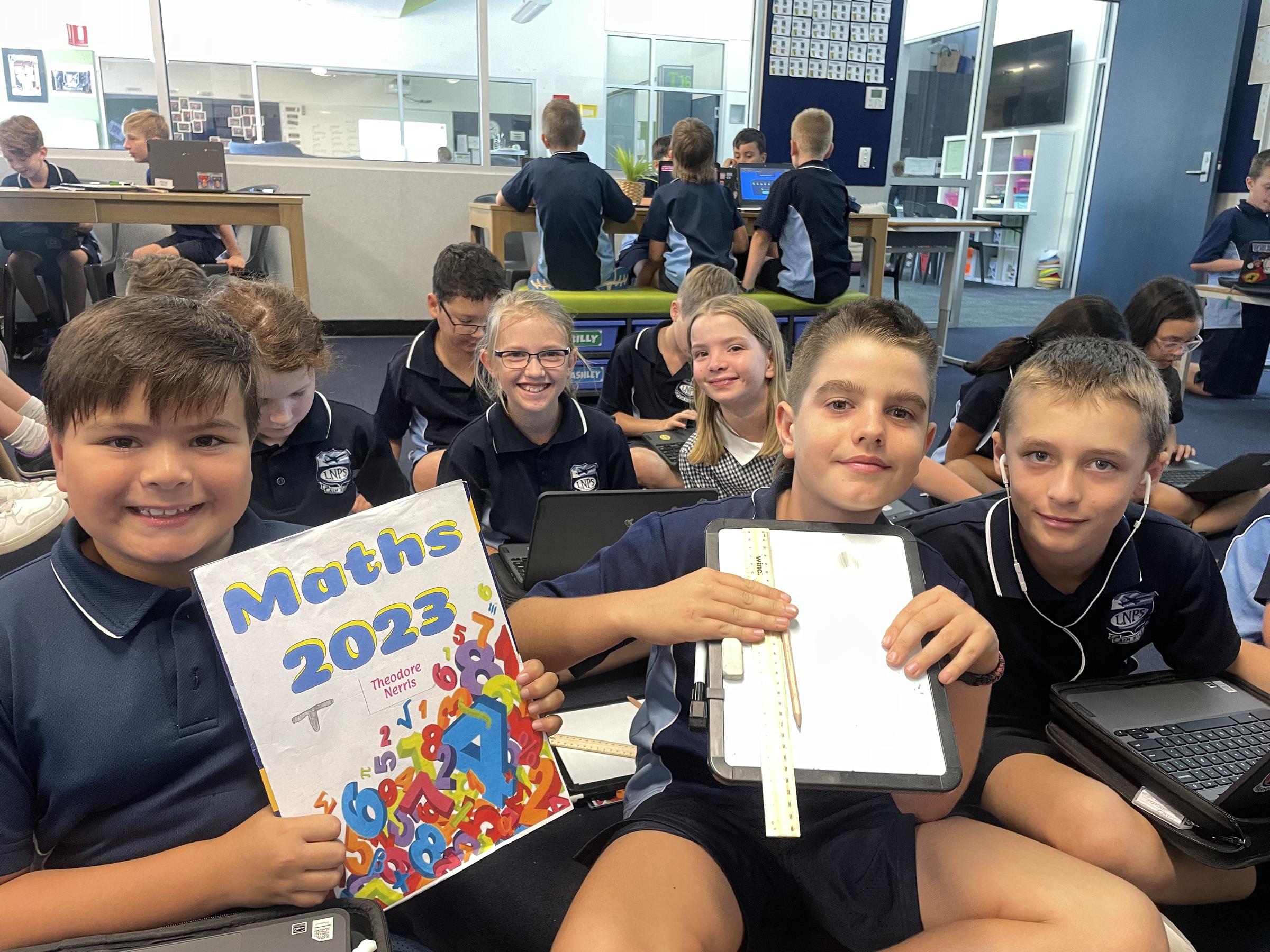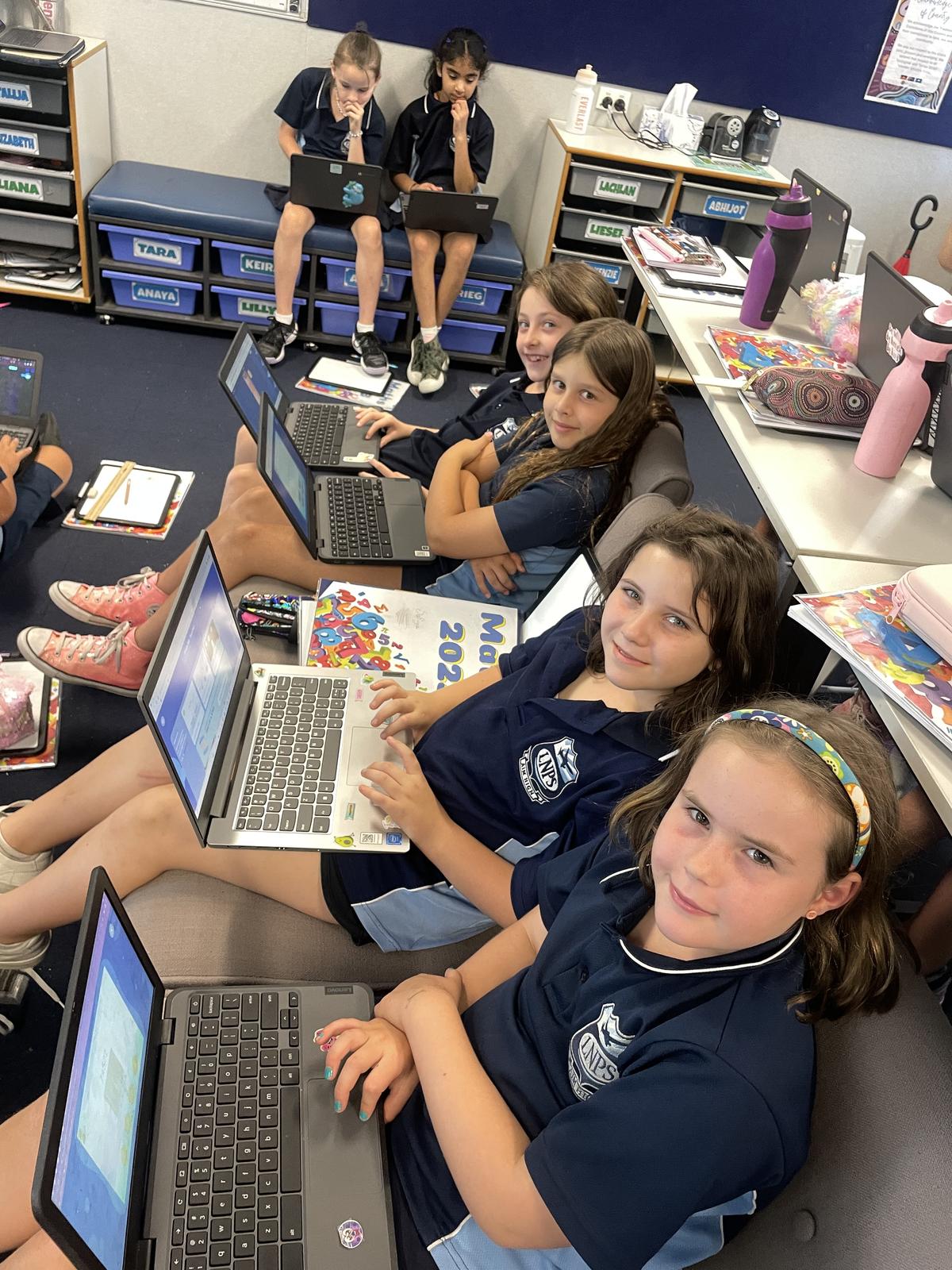Term 1
In Term 1, our focus is on Number and Place Value
Year 3
Number and Place Value
Learning intentions
Students will:
- identify odd and even numbers
- explain the properties of odd or an even number
- skip count collections by 2s or by grouping collections of objects in 10s
- understand that the groupings of 100s, 10s, 1s can be taken apart in different, but equivalent ways
- recognise, represent and order numbers up to 10 000
- partition, rearrange and regroup numbers up to 10 000.
Number - the 4 operations
Learning Intentions
Students will:
- understand the commutative and inverse properties of the operations
- know that equations must be equal, and the equal sign means ‘is equal to’
- model and represent the operations in a variety of ways (concrete, pictorial and abstract)
- solve addition and subtraction problems with a variety of appropriate strategies, both mental and the use of formal algorithms
- understand the relationship between addition and subtraction and use this knowledge to solve problems
- identify the structure and operations in worded problems using part-part-whole knowledge
- use appropriate vocabulary to communicate their thinking
- develop strategies for the recall of multiplication facts and number patterns for 2, 3, 5 and 10 and related division facts
- connect the use of arrays to solve multiplication and division problems
- solve division problems by sharing quantities equally in groups.
Term 2
In Term 2 our Focus will be on Fractions and Time and Chance.
Fractions
Learning Intentions
Students will:
- understand the commutative and inverse properties of the operations
- know that equations must be equal, and the equal sign means ‘is equal to’
- model and represent the operations in a variety of ways (concrete, pictorial and abstract)
- solve addition and subtraction problems with a variety of appropriate strategies, both mental and the use of formal algorithms
- understand the relationship between addition and subtraction and use this knowledge to solve problems
- identify the structure and operations in worded problems using part-part-whole
- knowledge
- use appropriate vocabulary to communicate their thinking
- develop strategies for the recall of multiplication facts and number patterns for 2, 3, 5 and 10 and related division facts
- connect the use of arrays to solve multiplication and division problems
- solve division problems by sharing quantities equally in groups.
Time and Chance
Learning Intentions
Students will:
- explain why and how time can be measured
- recognise time units of measurement including seconds, minutes, hours days, months, and years
- use a calendar to plan an identify days and dates
- use the hour hand to tell approximate time
- use the minute hand to tell exact time to the minute
- connect analogue and digital representations of time
- calculate the duration of events
- recognise outcomes of chance using correct terminology
- conduct repeated trials to identify variations and likelihood of outcomes.
Term 1
In Term 1, our focus is number, place value and the 4 operations.
Year 4
Number and Money
Learning Intentions
Students will:
- understand that the groupings of hundreds, tens, ones, tenths and so on can be taken apart in different but equivalent ways
- know that the place value system extends infinitely in 2 directions
- recognise, represent, and order numbers to at least tens of thousands
- partition, rearrange and regroup numbers to at least tens of thousands
- understand that decimals are a way of recording fractions within the base-ten system
- make connections between fractions and decimals
- solve problems involving the calculation of money to the nearest 5c.
Number – multiplication, division and odd, even numbers
Learning Intentions
Students will:
- identify that an even number is divisible by 2 and will use the properties of odd and even numbers with all 4 operations
- know that number sequences and their patterns can be extended indefinitely by investigating number sequences and their patterns
- understand that multiplication involves counting groups of equal sizes and determining how many there are in total or, using a representative set as unit in a
- multiplicative comparison
- recall multiplication facts up to 10 × 10 and use these facts to recall related division facts
- understand that division is the inverse of multiplication and that multiplication involves combining equal sets and division involves sharing into equal sets
- represent division as sharing into equal sets, they will recognise the ÷ symbol
- choose efficient mental and written strategies to solve multiplication and division problems with no remainder.
Term 2
In Term 2, our focus is on fractions, patterns and algebra.
Fractions
Learning Intentions
Students will:
- apply knowledge of unit fractions in context and identify how many parts there are in relation to parts in the whole
- understand the connection between the whole and equal parts and reason how to create the whole from knowledge of one part
- understand that when a group is divided into equal parts, a fraction is created
- explore relative size of unit fractions on a number line using benchmark numbers
- build a number line to compare fractional values.
- explore unit fractions and consider the relationship between part and whole
- understand that fraction relationships can be any shape when all the shapes are equal in area.
- develop an understanding of the relationship between improper fractions and mixed numerals. They will convert improper fractions to mixed numbers and vice versa.
- investigate relationships between different representations of fractions. They analyse the effect of changing the numerator and denominator on the type and size of a fraction.
- use understanding and reasoning to solve problems involving fractions in different contexts.
Statistics and Time
Learning Intentions
Students will:
- interpret a range of graphs and identify the information being communicated
- understand and determine the purpose for collecting data
- select, trial, and describe methods for data collection
- know the features of common graphs, including column and picture graphs
- know a variety of data displays and evaluate the effectiveness of them
- construct suitable data displays to effectively display information
- know how to convert between seconds, minutes, and hours
- use ‘am’ and ‘pm’ notations and solve simple time problems.


